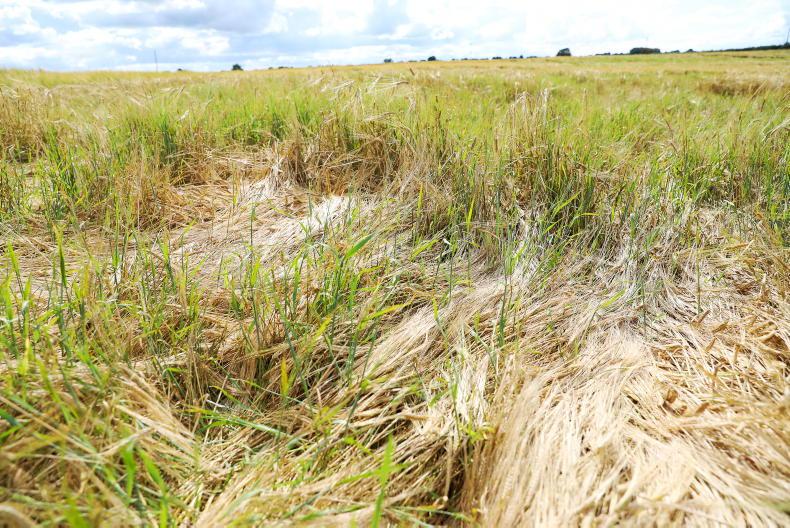Relief: This week offered relief to some to get work done, depending on the part of the country you are in, but opportunities remain low and it’s a matter of snatching and grabbing crops when you can.
April-sown crops are proving difficult to cut. As stated on the news and tillage pages, green growth and lodging are issues. Some spring barley varieties also have poor straw characteristics and are breaking down in the field, leading to more losses. Lodged crops will be easier to cut with sunshine, but high moistures will be a reality for many now to get as much yield as possible.
Weather: There looks to be rain due at the weekend, but, so far, the weather outlook doesn’t look too bad for early next week. Ground conditions remain difficult for many, so be careful when filling trailers and travelling on fields - although that is easy to say when there are some fields that farmers cannot enter to cut. Some damage will be done to fields this year no matter what.
Malting barley: Many malting crops are now failing, but some are still making the cut and at a premium of €110/t where fixed and about €70/t otherwise at present, it is important to continue to test your grain for malting standards. It is also essential that malting and food-grade crops are not sprayed with glyphosate, so be sure that any crops destined for food grade have not been sprayed. If found, you could face a big bill to compensate the affected merchant.
Stubble cultivation: Remember to cultivate as soon as possible after straw chopping and to cultivate stubbles for nitrates once straw is chopped or removed. This is supposed to be done within 14 days of harvest, but is proving difficult.
Catch crops: Catch crops will do well where planted early and some farmers will be able to spread seed while cultivating stubbles. Count up your costs. You don’t need a big fancy mix of plants. Remember to keep away from brassica crops, such as forage rape, where oilseed rape is in the rotation, as it can cause weed problems and problems with clubroot.
It has emerged that a grass lie-back is now required beside catch crops which are to be grazed or beside forage crops such as beet or kale for grazing. This grass lie-back needs to be the same size in area as the forage crop area. So, if you have 10ac of forage rape you need a 10ac grass lie-back beside it. You also need a 3m buffer around the perimeter of the field planted with the forage crop. This buffer can be volunteer cereals or grass, but not the forage crop.
It’s a disappointing rule, as it is not promoting co-operation between livestock and tillage farmers. Hopefully a solution can be found to this quickly.
Keep safe: At this time of year, it is easy to become overwhelmed with work and rush jobs. Always put safety first. Take a minute to think. It’s also important to keep in touch with fellow farmers - you’ll find everyone is in a similar boat.






 This is a subscriber-only article
This is a subscriber-only article










SHARING OPTIONS: